Abstract
Four outbreaks of an infectious, exudative skin disease of 6 to 10 week-old weaned pigs, are described. The disease was seen in fattening barns where weanlings from several sources were mixed. The disease was characterized in the peracute form by the formation, over the entire body, of a brown, greasy, odorous exudate, by loosening of the hoofs, by severe depression, dehydration and death in 3 to 5 days. In the acute form the lesions were identical, but their evolution slower, the mortality was high, and survivors severely stunted. Secondary infections seemed largely responsible for mortality in the acute form. Subacute infections were frequent and characterized by the formation of few to many circular exudative foci which became dry and cleared up completely in about 2 weeks.
Antibiotics and mineral supplements were of no value in controlling or preventing the development of lesions or mortality.
Minimal-disease pigs were exposed to diseased pigs from 3 of the 4 outbreaks studied and in all cases they developed typical lesions and could transmit the infection to other pigs. Bacteriological examination of field and experimentally produced cases gave inconclusive results pending further study.
Full text
PDF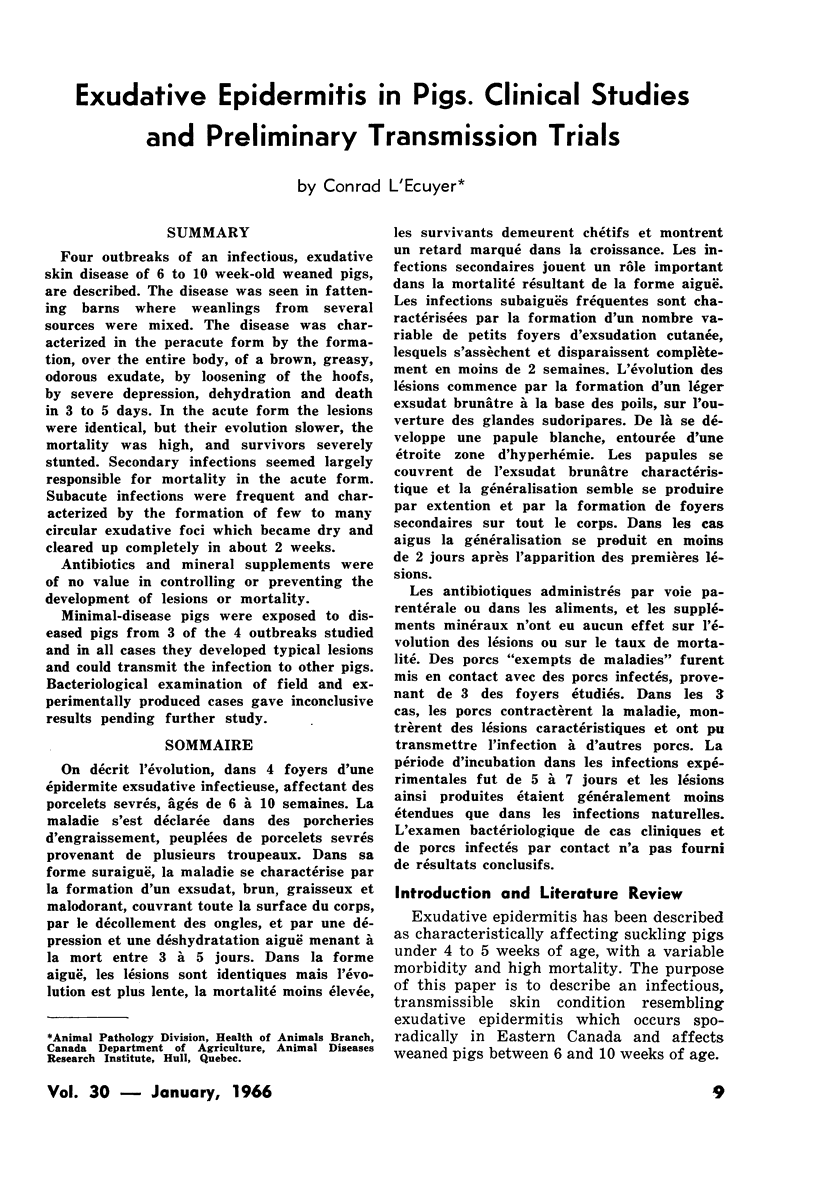
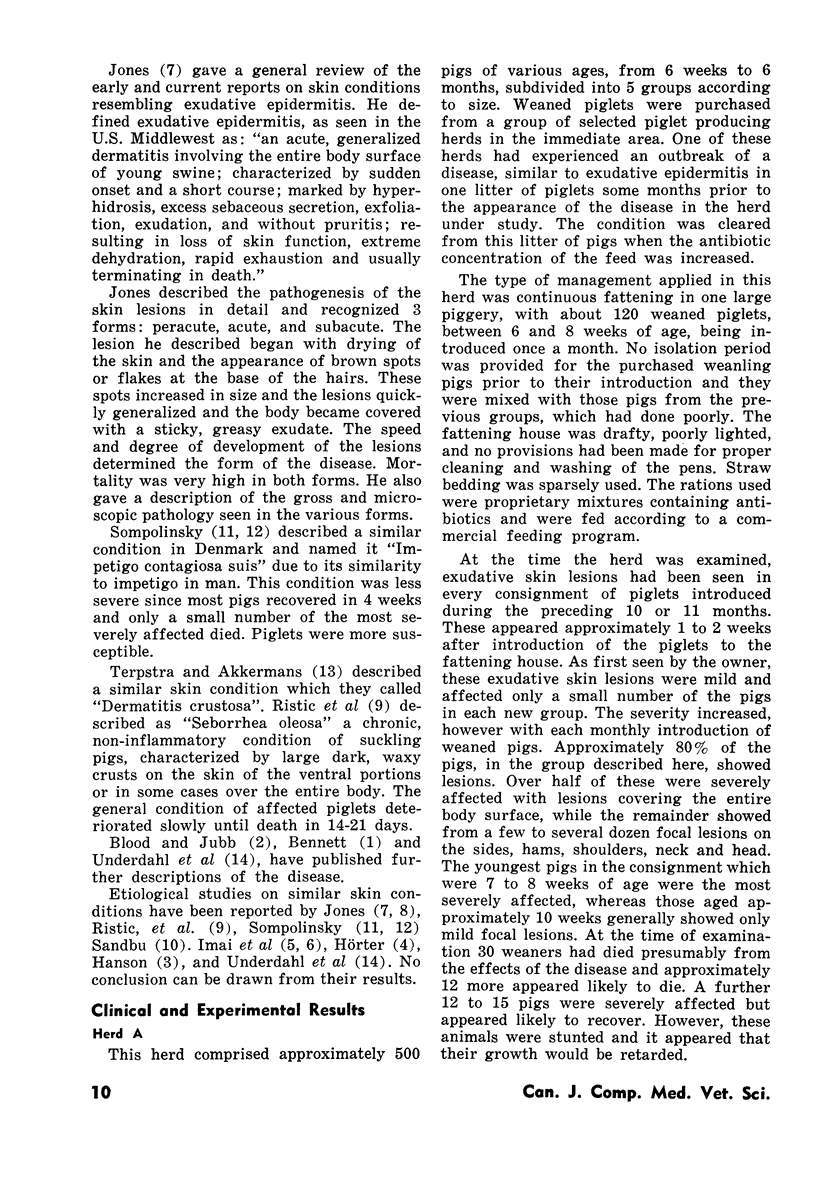
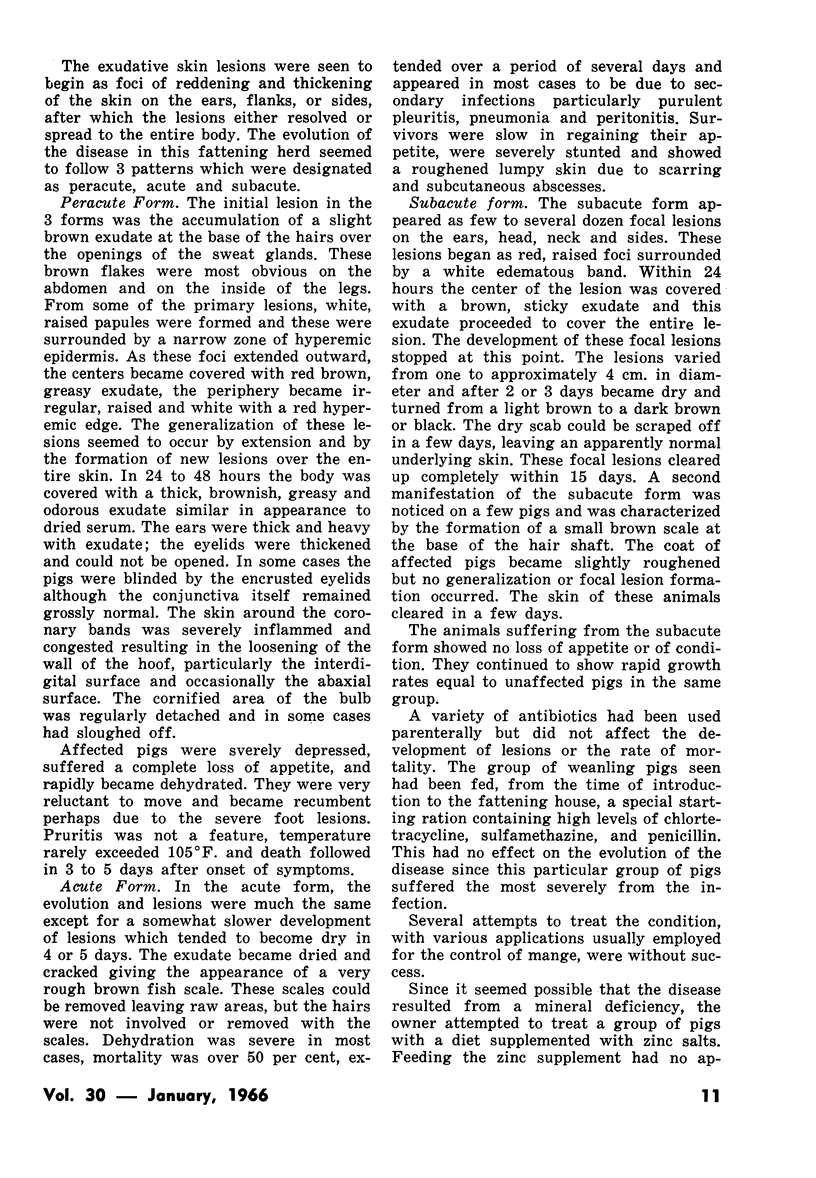
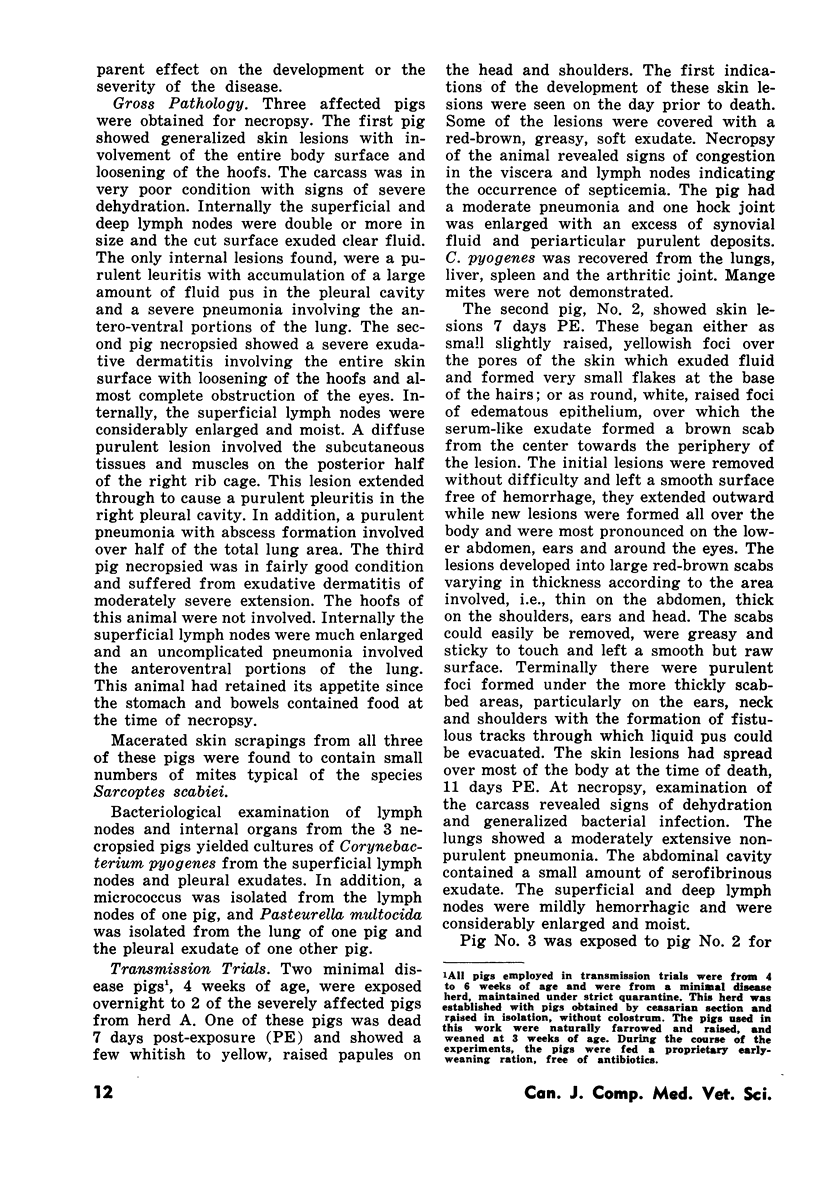
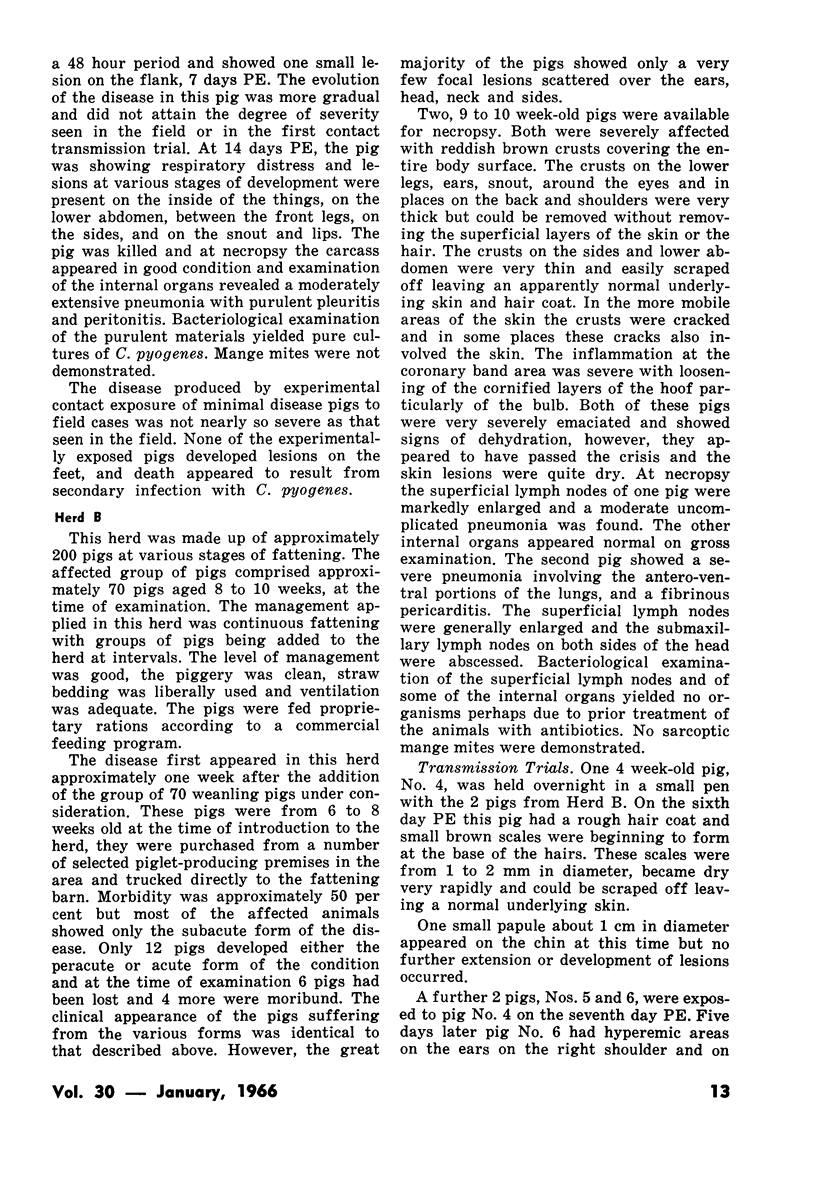
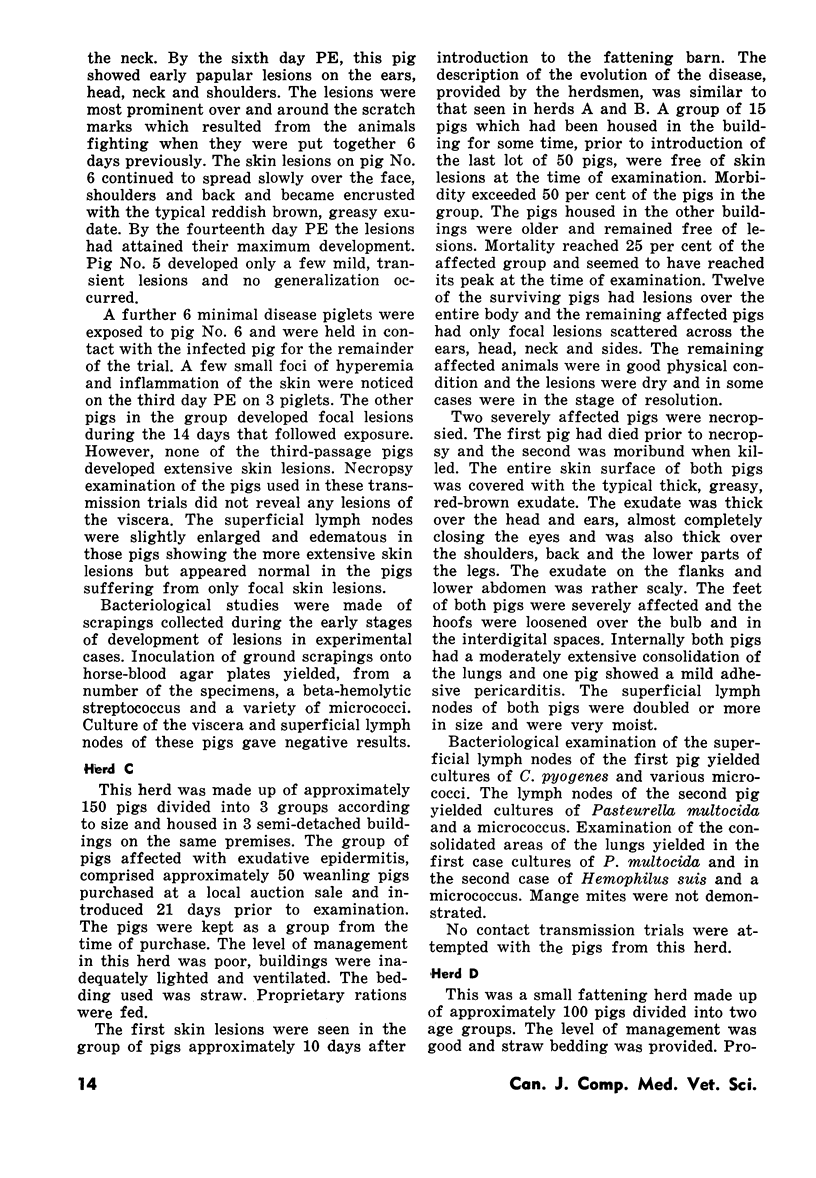
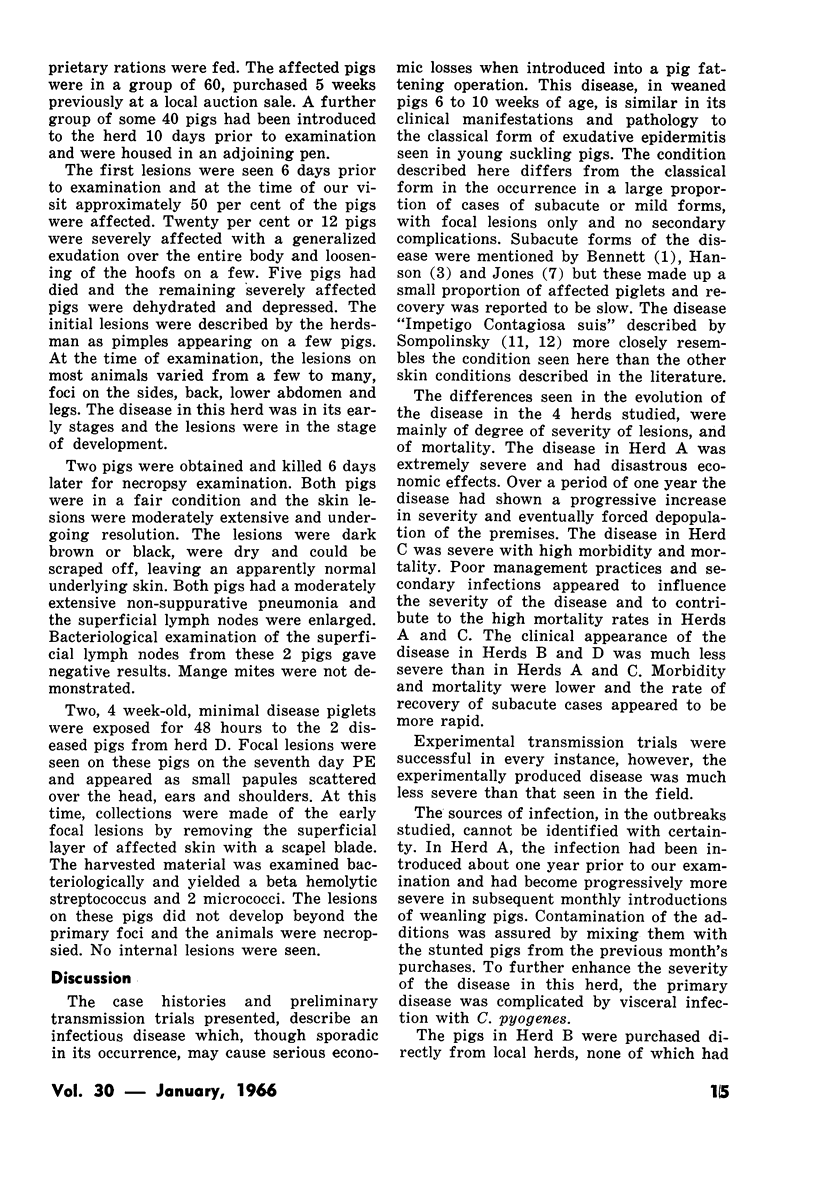

Selected References
These references are in PubMed. This may not be the complete list of references from this article.
- JONES L. D. Exudative epidermitis of pigs. Am J Vet Res. 1956 Apr;17(63):179–193. [PubMed] [Google Scholar]
- UNDERDAHL N. R., GRACE O. D., YOUNG G. A. Experimental transmission of exudative epidermitis of pigs. J Am Vet Med Assoc. 1963 Apr 1;142:754–762. [PubMed] [Google Scholar]


